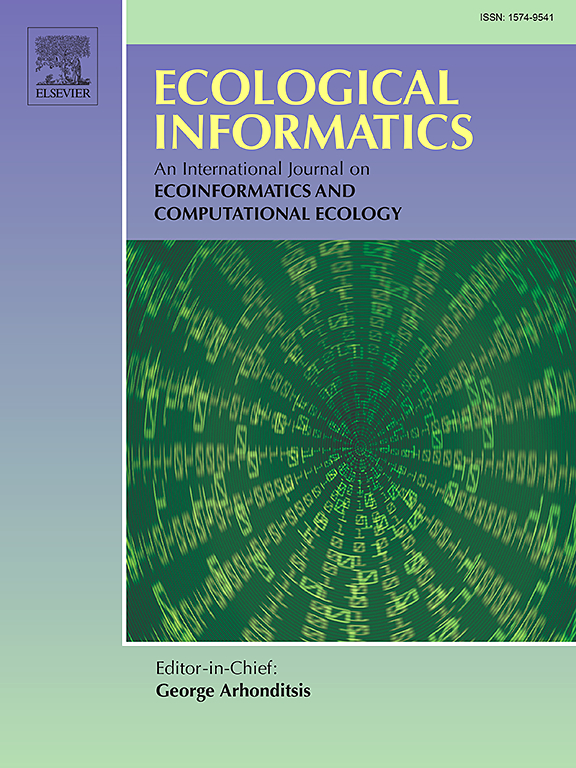Hyperspectral sensing of aboveground biomass and species diversity in a long-running grassland experiment
IF 5.8
2区 环境科学与生态学
Q1 ECOLOGY
引用次数: 0
Abstract
Vegetation properties can be assessed through analysis of canopy reflectance spectra. Early techniques relied on simple two-band vegetation indices (VIs) that exploit leaf reflectance properties at key wavelengths. As the technology matures it is now possible to gather and test hyperspectral data. Little evidence exists on how different management regimes, such as nutrient addition, might affect hyperspectral reflectance and thus influence derived estimates of plant diversity and productivity. At a grassland experiment in southern England, we used a portable spectroradiometer to sample 96 plots exposed to multifactorial treatments combining herbivory, plant competition, soil pH and fertility. Our objective was to compare the predictive performance of popular two-band VIs with a multivariate partial least square regression (PLSR) model that uses all available wavelengths. We found that the PLSR models showed higher predictive power than the best performing VIs – that was especially true for our measure of species diversity ( = 0.36 compared with a Pearson correlation of 0.21). The predictive power for our PLSR model of biomass ( = 0.54) compares favourably with values reported in earlier grassland studies. These results confirm that hyperspectral measurement combined with multivariate regression techniques is a promising approach for monitoring grassland properties. There is evidence of particular benefit in capturing narrow bands associated with the red edge region of the spectrum (700–750 nm). Remotely sensed hyperspectral images at a fine spatial scale offer the prospect for matching with sampling units as small as the 2 × 2 m nutrient subplots measured here.
求助全文
约1分钟内获得全文
求助全文
来源期刊

Ecological Informatics
环境科学-生态学
CiteScore
8.30
自引率
11.80%
发文量
346
审稿时长
46 days
期刊介绍:
The journal Ecological Informatics is devoted to the publication of high quality, peer-reviewed articles on all aspects of computational ecology, data science and biogeography. The scope of the journal takes into account the data-intensive nature of ecology, the growing capacity of information technology to access, harness and leverage complex data as well as the critical need for informing sustainable management in view of global environmental and climate change.
The nature of the journal is interdisciplinary at the crossover between ecology and informatics. It focuses on novel concepts and techniques for image- and genome-based monitoring and interpretation, sensor- and multimedia-based data acquisition, internet-based data archiving and sharing, data assimilation, modelling and prediction of ecological data.
 求助内容:
求助内容: 应助结果提醒方式:
应助结果提醒方式:


